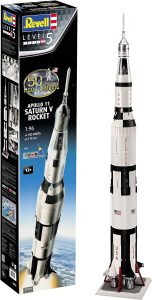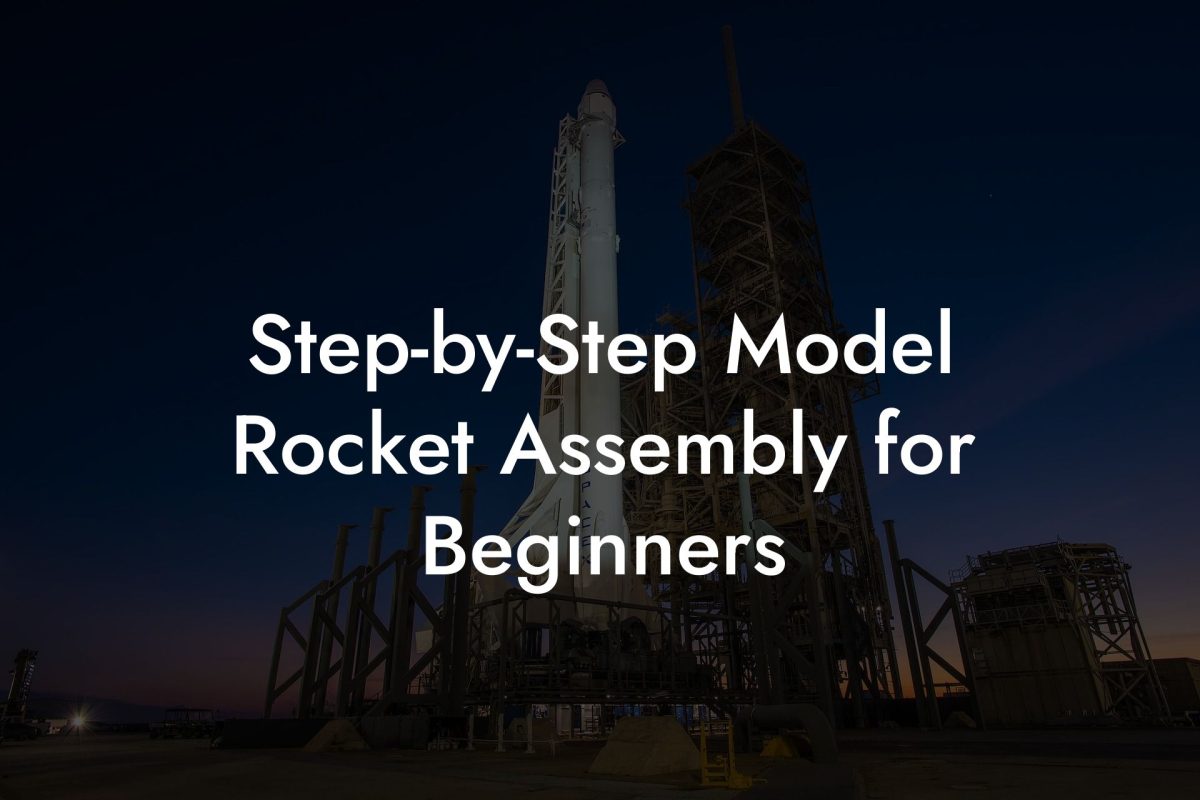Ready to blast off into the exhilarating world of model rocketry? Whether you’re a complete beginner or just curious about how those tiny rockets zoom into the sky, “Blast Off: The Ultimate Beginner's Guide to Model Rocketry” is here to take you on a journey from zero to liftoff. Get ready to channel your inner astronaut and embark on a hands-on adventure that’s equal parts science, creativity, and pure adrenaline.
Quick Links to Useful Sections
- Welcome Aboard: Your First Steps into Model Rocketry
- The Basics: What Is Model Rocketry?
- Choosing Your First Rocket Kit: What to Look For
- Safety First: Guidelines for a Secure Launch
- Understanding the Science: Aerodynamics and Propulsion Explained
- Step-by-Step Guide to Building Your First Rocket
- The Launch: Bringing Your Creation to Life
- Troubleshooting Your Launches: Tips for Success
- Expert Tips and Pro Hacks for Beginner Rocketeers
- Trends and Innovations in Model Rocketry
- Resources and Communities: Where to Learn and Connect
- Model Rocketry FAQs: Your Burning Questions Answered
- Your Mission Continues: Embrace the Model Rocket Lifestyle
Welcome Aboard: Your First Steps into Model Rocketry
Model rocketry is more than a hobby—it’s an invitation to explore the principles of flight, engineering, and design while having a blast (pun intended!). In this guide, we break down every element you need to know as a beginner. From selecting your first rocket kit to understanding the science behind a successful launch, we’ve got you covered with practical advice, insider tips, and a healthy dose of humor.
Whether your dream is to recreate the thrill of a rocket launch or simply to discover a new, engaging pastime, this guide will serve as your mission manual. So strap on your metaphorical space suit, and let’s get ready to experience the excitement of model rocketry from the ground up.
The Basics: What Is Model Rocketry?
At its core, model rocketry is all about building and launching scaled-down replicas of real rockets. These kits are designed with safety and ease of use in mind, allowing beginners to experiment with the fundamentals of aerodynamics and propulsion without the risks associated with full-scale rockets.
Key Concepts: Here are the essential ideas every beginner should know:
Looking For The Best Model Rocket Kits? You'll Love These:
- Scaled-Down Design: Model rockets are smaller, lighter, and built using materials that are safe and durable.
- Rocket Engine: These rockets typically use solid-fuel engines that generate thrust by burning a controlled amount of fuel.
- Stability and Recovery: Features like fins for stabilization and parachutes or streamers for safe recovery ensure your rocket flies straight and lands safely.
- Hands-On Learning: From assembly to launch, model rocketry is a practical way to learn about physics, engineering, and even a bit of meteorology.
Think of model rocketry as a miniaturized laboratory in your backyard—one where every launch is a thrilling experiment and every landing is a lesson learned.
Choosing Your First Rocket Kit: What to Look For
The foundation of your rocketry adventure starts with selecting the right rocket kit. With a multitude of options available, it can be tempting to go for the flashiest or the most advanced model. However, for beginners, simplicity, clarity of instructions, and safety are paramount.
Beginner-Friendly Kits: Look for kits that are labeled “starter” or “beginner” friendly. These kits are pre-cut, have clear assembly instructions, and include all the components needed for a safe and successful launch.
What to Consider:
- Ease of Assembly: A well-designed kit should make the assembly process straightforward. Look for kits that require minimal cutting and gluing.
- Safety Features: Choose kits that emphasize safety, including secure engine compartments, reliable recovery systems, and robust construction materials.
- Cost: Starter kits come in various price ranges. Find one that fits your budget without compromising on quality.
- Community Feedback: Check out reviews and forum discussions to see which kits other beginners recommend.
Your first rocket kit is your gateway into a world where every component you assemble is a building block to your newfound passion. Start simple, gain confidence, and soon you’ll be ready to upgrade to more advanced models.
Safety First: Guidelines for a Secure Launch
Nothing ruins the thrill of a rocket launch like a preventable mishap. Safety is the cornerstone of model rocketry, and adhering to a few basic guidelines can ensure that every launch is as secure as it is exciting.
Pre-Launch Safety Checklist:
- Inspect Your Rocket: Always check that all components, especially the engine and recovery system, are in proper working order.
- Choose a Suitable Launch Site: Find a wide-open space, free from trees, buildings, and power lines. Parks and designated launch fields are ideal.
- Monitor Weather Conditions: Avoid launching in strong winds, rain, or other adverse conditions. Calm, clear days are best.
- Wear Protective Gear: Safety goggles and proper attire are essential to protect against unexpected debris or engine malfunctions.
Following these simple precautions ensures that your rocketry hobby remains safe and enjoyable. After all, the goal is to reach for the stars, not to bring unexpected surprises down to Earth.
Understanding the Science: Aerodynamics and Propulsion Explained
You might be wondering, “How does a tiny rocket defy gravity and soar into the sky?” The answer lies in the fascinating realms of aerodynamics and propulsion. Don’t worry—while the science can be complex, we’re here to break it down in a way that’s fun and digestible.
Aerodynamics: This is the study of how air flows around objects. In model rocketry, aerodynamics is key to ensuring your rocket flies smoothly and stably. Components like fins and the nose cone are meticulously designed to reduce drag and maintain a straight flight path.
Propulsion: The power behind every rocket is its engine. Model rockets typically use solid-fuel engines that work on the basic principle of action and reaction. As fuel combusts and expels gas out of the engine, the rocket is pushed upward with an equal force.
Newton’s Third Law of Motion: “For every action, there is an equal and opposite reaction.” This fundamental law of physics is what makes rocket launches possible. When your engine fires, the downward blast of exhaust gases propels your rocket upward.
While these scientific principles might seem like advanced rocket science (pun intended), understanding them can greatly enhance your appreciation for the art and engineering behind model rocketry.
Step-by-Step Guide to Building Your First Rocket
Now that you’re familiar with the basics, it’s time to roll up your sleeves and get building. Constructing your first model rocket is a rewarding process that blends creativity, patience, and technical skill.
Step 1: Unboxing and Organizing – Open your kit and lay out all the components. Take a moment to familiarize yourself with each part, from the body tube to the recovery system.
Step 2: Assembly – Follow the provided instructions carefully. Most beginner kits are designed with simplicity in mind, so pay attention to details like aligning fins properly and securing the engine mount.
Step 3: Personalization – Once assembled, add your personal flair. Whether it’s a custom paint job, decals, or other decorative touches, personalizing your rocket makes it uniquely yours.
Step 4: Engine Installation – Insert the engine into its designated compartment. Ensure it fits snugly and securely, as this component is crucial for a successful launch.
Step 5: Pre-Launch Preparation – Conduct a final safety and functionality check. Confirm that the recovery system is properly packed and that every component is secure before heading to your launch site.
Each step in the building process is an opportunity to learn and improve. Take your time, enjoy the process, and don’t be afraid to consult online forums or instructional videos if you need extra guidance.
The Launch: Bringing Your Creation to Life
The moment of truth has arrived—the launch! This is where all your hard work pays off, and your rocket takes flight. Here’s how to ensure your launch is a memorable success.
Pre-Launch Ritual: Conduct a final inspection of your rocket. Confirm that all components are secure and that the launch pad is set up in a safe, open area. Double-check weather conditions and ensure that everyone involved is wearing protective gear.
Countdown and Ignition: Set up your launch controller, start your countdown, and ignite the engine. Stand back and watch as your creation soars skyward, leaving a trail of smoke and a sense of wonder in its wake.
Post-Launch: Once your rocket has reached its peak and the recovery system deploys, observe the descent and recovery. This is an invaluable learning opportunity—each launch, whether perfectly executed or filled with “oops” moments, offers insights for your next mission.
Enjoy the thrill of your first launch and remember: every rocket ride is a stepping stone toward mastering this dynamic hobby.
Troubleshooting Your Launches: Tips for Success
Even the most meticulously built rockets can encounter challenges. Troubleshooting is a natural part of the learning process and will help you become a more adept rocketeer.
Common Issues:
- Engine Failures: If your engine doesn’t ignite or produces weak thrust, double-check its installation and condition. A clean engine compartment and proper seating can resolve many issues.
- Unstable Flight: A wobbly or erratic flight may be due to misaligned fins or an unbalanced design. Revisit your assembly instructions to ensure every part is properly aligned.
- Recovery System Problems: If your parachute or streamer fails to deploy, inspect for tangles or improper packing. Practice deployments on a smaller scale to refine your technique.
- General Maintenance: Regularly clean and inspect your rocket after each launch. Keeping components free of soot and debris ensures optimal performance and longevity.
Troubleshooting is your chance to improve and refine your techniques. Every “oops” moment is simply an opportunity to learn and become a better rocketeer.
Expert Tips and Pro Hacks for Beginner Rocketeers
Ready to take your skills to the next level? Here are some pro tips and hacks that seasoned enthusiasts swear by:
Experiment with Different Engines: As you grow more confident, try using engines with varying power levels to see how they affect your rocket’s performance. Always start with lower power options until you master the basics.
Customize Your Design: Don’t be afraid to personalize your rocket. Experiment with different fin shapes, body designs, or even custom paint jobs. Creativity not only makes your rocket unique but can also improve its aerodynamics.
Keep a Launch Journal: Document every launch, including weather conditions, engine type, and flight performance. Tracking your progress helps you understand what works—and what needs tweaking.
Join a Community: Engage with fellow rocketeers on online forums, social media groups, and local clubs. Sharing experiences and learning from others is one of the most rewarding parts of this hobby.
Attend Workshops and Events: Participate in local launch events or workshops to gain hands-on experience. Live demonstrations and expert advice can accelerate your learning curve.
Practice Makes Perfect: Don’t be discouraged by initial setbacks. Each launch is a learning opportunity, and even the pros had their fair share of “blast-offs” before perfecting their technique.
Trends and Innovations in Model Rocketry
Model rocketry is a rapidly evolving hobby. New materials, technologies, and design philosophies are constantly pushing the boundaries of what’s possible in the miniature universe.
Advanced Materials: Modern rockets are increasingly built with lightweight, durable materials like carbon fiber and advanced composites. These innovations improve performance while keeping your rocket safe and resilient.
Smart Integration: Technology is making its mark on model rocketry. Look out for innovations such as onboard cameras, telemetry systems, and even smartphone-controlled launches that add a high-tech edge to your hobby.
Sustainability: With growing environmental awareness, many enthusiasts are exploring eco-friendly materials and biodegradable components for their rockets. This trend ensures that rocketry remains a sustainable and forward-thinking hobby.
Community Collaboration: Open-source designs and online collaboration platforms are fueling rapid innovation. The collective wisdom of rocketry enthusiasts worldwide is driving creative breakthroughs and making advanced techniques more accessible than ever.
Keeping an eye on these trends can inspire you to experiment with new ideas and incorporate the latest innovations into your own projects.
Resources and Communities: Where to Learn and Connect
Your journey into model rocketry is best enjoyed with a community of like-minded enthusiasts. Here are some top resources to help you learn, connect, and grow:
Online Forums: Websites like Reddit’s r/modelrocketry and specialized rocketry forums offer a wealth of knowledge and a supportive community where you can ask questions and share your experiences.
Social Media Groups: Join Facebook groups, Instagram pages, and Twitter communities dedicated to model rocketry. These platforms are great for sharing photos, videos, and tips with fellow hobbyists.
YouTube Channels: Visual learners will appreciate channels that feature live launches, tutorials, and behind-the-scenes insights into the world of model rocketry.
Local Clubs and Workshops: Check out local STEM clubs or rocketry groups that host workshops, launch events, and hands-on training sessions. These gatherings are invaluable for networking and learning from experienced rocketeers.
Books and Online Courses: There is an abundance of literature and digital courses covering everything from the basics of rocket design to advanced propulsion techniques. These resources can help deepen your understanding and refine your skills.
Whether you’re a lone enthusiast or a social butterfly, tapping into these resources will enrich your rocketry experience and keep you inspired.
Model Rocketry FAQs: Your Burning Questions Answered
Here are some frequently asked questions from beginners just like you. We’ve compiled expert answers to help clear up any uncertainties and boost your confidence for a successful launch.
1. What exactly is model rocketry?
Model rocketry is a hobby where you build and launch scaled-down rockets that operate on the same principles as real rockets. It’s designed to be safe, educational, and fun.
2. Which rocket kit is best for beginners?
Starter kits labeled for beginners are ideal. They come with easy-to-follow instructions, pre-cut materials, and built-in safety features to help you learn the basics.
3. How do I ensure a safe launch?
Safety is paramount in model rocketry. Always perform thorough pre-launch checks, use a wide-open space, wear protective gear, and follow the manufacturer’s instructions.
4. What are the key parts of a model rocket?
The essential components include the body tube, engine, fins, nose cone, and recovery system. Each part plays a crucial role in ensuring stable flight and safe recovery.
5. Can I build a rocket from scratch?
Absolutely! Once you’re comfortable with kit-based models, building your own custom rocket is a fantastic way to explore your creativity and engineering skills.
6. How does the rocket engine work?
The engine burns solid fuel to produce thrust, propelling the rocket upward. This follows Newton’s third law: for every action, there is an equal and opposite reaction.
7. What causes an unstable flight?
Instability can arise from misaligned fins, an unbalanced design, or a poorly packed recovery system. Proper assembly and regular maintenance can help prevent these issues.
8. Where can I find more information about model rocketry?
There are numerous online communities, forums, books, and YouTube channels dedicated to model rocketry. These resources offer tutorials, troubleshooting tips, and inspiration for your next project.
9. How do weather conditions affect launches?
Weather conditions, particularly wind and rain, can affect your rocket’s trajectory and engine performance. Always choose calm, clear days for launching.
10. What are the latest trends in model rocketry?
Recent trends include the use of advanced materials, smart technology integrations like onboard telemetry, sustainable components, and a surge in community-driven innovations.
Your Mission Continues: Embrace the Model Rocket Lifestyle
Model rocketry is more than just a pastime—it’s a gateway to creativity, learning, and community. Every launch is a new adventure, a new lesson in physics, and a chance to express your inner innovator.
Whether you’re meticulously assembling your kit, experimenting with custom designs, or sharing tips with fellow enthusiasts, remember that every moment in this hobby is a step toward mastering the art of flight. Embrace the challenges, celebrate the successes, and never stop exploring the vast universe of possibilities that model rocketry offers.
Your journey into model rocketry is just beginning. With every launch, you’re not only reaching for the stars—you’re also building a community and a legacy of innovation. So, keep dreaming big, stay curious, and prepare for many more thrilling liftoffs in your rocketry adventure.
Ready to launch? It’s time to grab your kit, ignite your passion, and let your creativity soar into the stratosphere. The sky isn’t the limit—it’s just the start of an incredible journey!
Looking For The Best Model Rocket Kits? You'll Love These:
Useful Interruption: Dive deeper into the world of Model Rockets with our most popular sections. If there is anything you think is missing or anything you would love for us to write about, just give us a shout.
- Getting Started & Basics With Model Rockets
- Model Rocket Design, Build & Customization
- Model Rocket Propulsion & Engine Technology
- Model Rocket Launch Techniques & Recovery
- Model Rocket Advanced Rocketry & Innovations
- Model Rocket DIY and Customization
- Model Rocket Equipment Reviews & Digital Tools
- Community, Competitions & Education
- Model Rocket Troubleshooting & FAQs
- Model Rocket Bonus/Seasonal & Niche Topics
A group of model rocket enthusiasts gathered at a field for their weekly launch event. Among them was Dave, a seasoned builder known for pushing the limits of hobby rocketry. This time, he had outdone himself.
“Ladies and gentlemen,” Dave announced, dramatically pulling a cloth off his latest creation, “I present to you: The Kraken!”
The crowd gasped. This wasn’t just a model rocket—it was a monster. The thing stood 8 feet tall, had six clustered engines, and was covered in enough duct tape to qualify as a classified aerospace project.
“Dave,” muttered Steve, the cautious safety officer, “Have you, uh… done the math on this?”
“Math?” Dave scoffed. “I built it in my garage at 3 a.m. with parts from eBay. This is an art piece, Steve.”
The countdown began.
5…
4…
3…
2…
1…
The engines ignited with a BOOM, and The Kraken shot up… kind of. It immediately did a violent barrel roll, narrowly missing the spectators before skyrocketing at an angle that could only be described as “legally questionable.”
The crowd collectively ducked as The Kraken flew straight over the adjacent cornfield, where Old Man Jenkins, the grumpiest farmer in town, was minding his business.
KABOOM!
The rocket disappeared behind the barn. A moment later, a flaming piece of Estes igniter wire landed at Steve’s feet. The silence was deafening.
And then—an unmistakable sound echoed across the field.
Jenkins’ shotgun being cocked.
“DAVE!!!” Steve shouted. “RUN.”
And that was the day Dave invented the first-ever biologically powered rocket booster: pure adrenaline.
To this day, nobody knows where The Kraken landed, but legend has it, it still haunts the skies, terrifying unsuspecting drones and low-flying birds.





